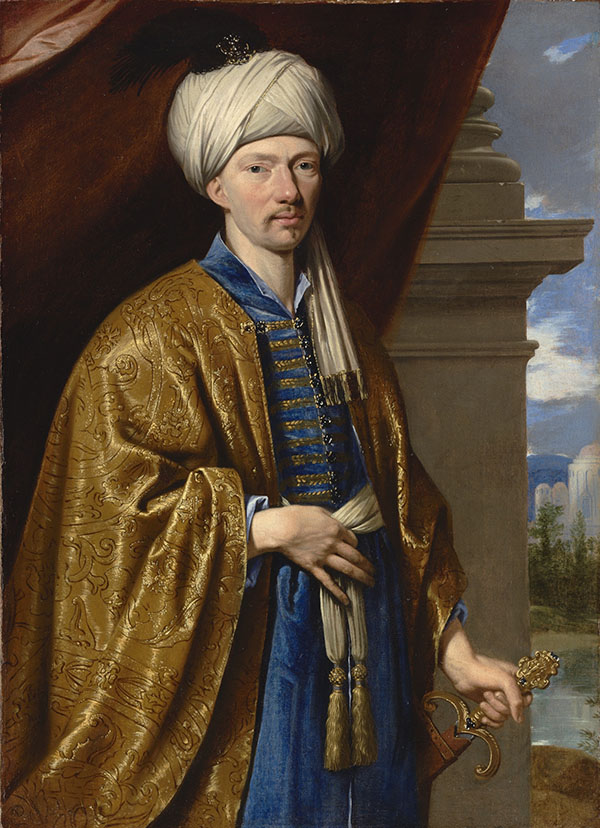Jean de Thévenot (1633 - 1667) was a French traveller who wrote extensively about his journeys. He was also a linguist, natural scientist and botanist. He was born in Paris to a noble family, the nephew of Melchisédech Thévenot, with whom he is often confused. He traveled extremely broadly, visiting England, the Netherlands, Germany and Italy. From Rome in 1655 he sailed to Malta, and then to Constantinople. From there in 1657 he ventured around the Greek Islands and then on to Egypt and Sinai. He made the Lent pilgrimage from Cairo to Jerusalem by caravan, visited holy sites in Palestine, and sailed the Mediterranean - several times taken by pirates, and involved in fights with Spanish corsairs.
In 1663, he traveled again to the east. This time, after stops in Egypt ans Palestine he proceeded east to Mosul, Baghdad and Mendeli. In 1664 he traveled Persia in the company of the gem merchant and traveler Jean-Baptiste Tavernier, attempting to find practicable land routes to India in order to circumvent the Dutch hold on the east. After parting ways with Tavernier, he stayed for more than a year in the Mughal Empire
Like his uncle, Thévenot was an accomplished linguist, skilled in Turkish, Arabic and Persian, and skilled in the natural sciences. Also, he wrote accounts of his travels: his first journey was published in 1665, and his later voyages were published posthumously in 1674 and 1684.
In 1663, he traveled again to the east. This time, after stops in Egypt ans Palestine he proceeded east to Mosul, Baghdad and Mendeli. In 1664 he traveled Persia in the company of the gem merchant and traveler Jean-Baptiste Tavernier, attempting to find practicable land routes to India in order to circumvent the Dutch hold on the east. After parting ways with Tavernier, he stayed for more than a year in the Mughal Empire
Like his uncle, Thévenot was an accomplished linguist, skilled in Turkish, Arabic and Persian, and skilled in the natural sciences. Also, he wrote accounts of his travels: his first journey was published in 1665, and his later voyages were published posthumously in 1674 and 1684.


